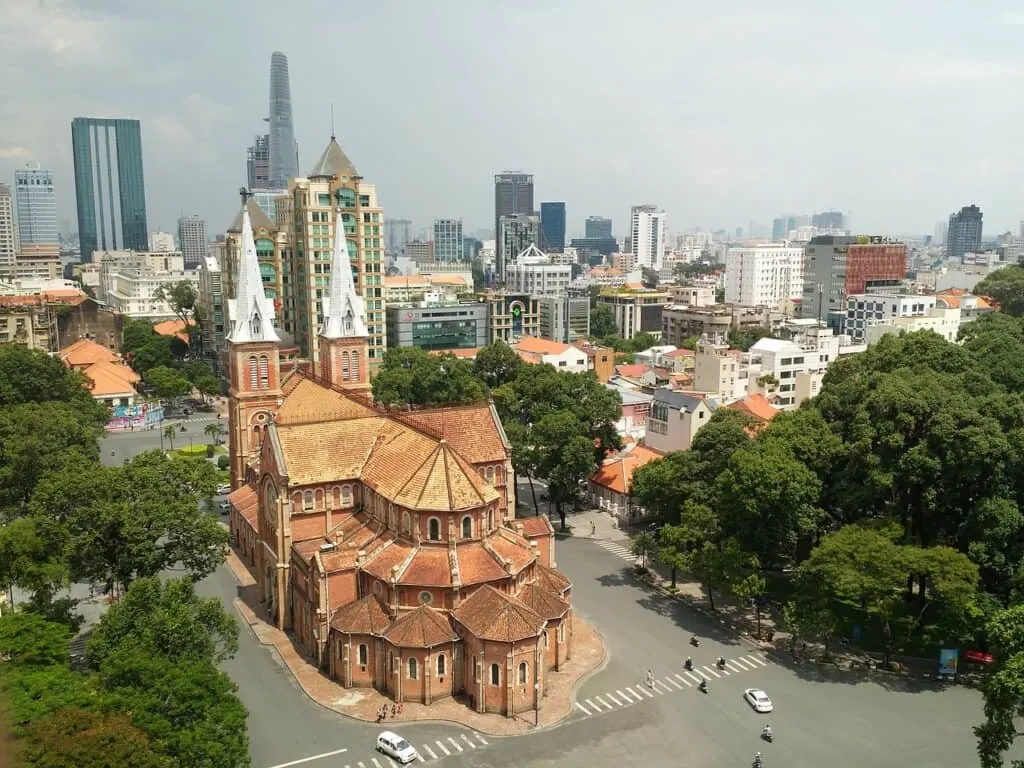Unforgettable experiences are around every bend in this Southeast Asian country. Whether you’re a history buff looking to explore Vietnam’s fascinating and often fraught history or a nature lover in search of sublime views like in Sapa, Vietnam has something for you.

If you’ve decided that this country is your next stop, you’re probably wondering what comes next. Luckily, this article is here to help you understand the ins and outs of Vietnam visas so that you can choose the option that best suits your travel plans, ahead of hitting the country’s top beach towns like Quy Nhon and Nha Trang!

Do I Need a Visa for Vietnam?
Most foreign visitors will need a permit in order to enter and exit this country. If you’re a citizen of eligible countries – including Australia, New Zealand, the US, and the UK – you can apply for the new eVisa for Vietnam in place of the older and more established Visa on Arrival (VoA).
To find out which of these options best suits your needs, websites such as Byevisa.com have put together a helpful eligibility checker tool that tells you which option you qualify for and how to apply for it.

If you’re not from an eligible country, you will need to apply for a traditional entry permit. This physical sticker is placed in your passport and can be requested by submitting your visa application for Vietnam and your passport to the nearest Vietnamese embassy or consulate.
Differences Between the E-Visa for Vietnam and VoA
There are a few important differences between the eVisa and the VoA. The better option depends on how long you plan on exploring, your point of entry to the country, and whether you wish to leave and enter the country multiple times during your travels.
The Electronic Visa application process is quick and easy and can get you your authorization within 3 business days. Once approved, you will have a Single-Entry pass valid for a visit of up to 30 days.

The VoA, on the other hand, can be valid for Single or Multiple-Entry trips of up to 90 days, depending on the option you select in your application. The cost of this document varies depending on the number of entries and the validity period selected. For this option, you first receive a Visa Approval Letter by email and then pay for the actual visa in Vietnam in cash when passing through immigration at the airport.
Another key difference between the 2 is the port of entry where each will be accepted. Therefore, when planning your adventure, it is important to note which ports will accept your travel document.
If traveling with the eVisa you can enter the country at the following points:
International Airports
Cat Bi (Hai Phong)
Cam Ranh (Khanh Hoa)
Can Tho
Da Nang
Noi Bai Airport (Ha Noi)
Phu Bai
Phu Quoc
Tan Son Nhat (Ho Chi Minh City)
Land ports
Bo Y
Cha Lo
Cau Treo
Huu Nghi
Ha Tien
Lao Bao
Lao Cai
La Lay
Moc Bai
Mong Cai
Nam Can
Na Meo
Song Tien
Tinh Bien
Tay Trang
Xa Mat
Seaports
Chan May
Da Nang
Duong Dong
Hon Gai
Hai Phong
Nha Trang
Quy Nhon
Ho Chi Minh City
Vuang Tau
The Vietnam VoA is only valid if you’re traveling by air and entering through the following airports:
International Airports
Cam Ranh (Nha Trang)
Cat Bi (Hai Phong)
Danang (Da Nang)
Noi Bai (Hanoi)
Tan Son Nhat (Ho Chi Minh City)
What Do I Need to Complete My Vietnam Visa Application?
Both of the documents mentioned above can be requested online from virtually anywhere in the world – no need to contact an embassy or deliver documents in person. All you need is an internet connection, a passport (valid at least 6 months past your planned travel dates), a credit or debit card to pay the online fee, and an email address.
Once your electronic travel pass is approved, you will be sent an email containing the e-visa which you will be required to print and show in immigration. We recommend keeping a printed copy of this document with you at all times during your travels in this country, just to be safe.

Similarly, for the VoA option, you will be required to print the Visa Approval Letter (PDF versions on your phone will not be accepted) that will be sent to you after your application. Upon arrival in Vietnam, you will be asked to present this letter in addition to 2 passport-sized photos (4cm x 6cm), your valid passport, and enough cash to pay for your Single or Multiple-Entry pass.
How Much Do Visas to Vietnam Cost?
The eVisa costs 25 USD which is payable online with a credit or debit card. The VoA costs approximately 45 USD for a Single-Entry trip of 30-90 days. For a Multiple-Entry pass, the cost is 65 USD.
What Else Should I Consider When Traveling to Vietnam?
When first making your currency conversion, you may be shocked by the stack of bills your US or European currency can get you. At the time of writing, 1 US dollar (.82 Euros) is equivalent to 23046.00000 Vietnamese Dong. Be careful with the zeros as some banknotes are quite similar and one can easily pass for another to a first-time visitor!
Also, it’s initially easy to underestimate the size of this country. To give you an idea, a train ride between Ha Noi and Ho Chi Minh City is over 1,056 mi (1,700 km) and takes about 35 hours. Fortunately, this opens doors for all types of new adventures including traveling Vietnam by train. We hope you have a wonderful time here!
Tips for Trip Success
Book Your Flight
Find an inexpensive flight by using Kayak, a favorite of ours because it regularly returns less expensive flight options from a variety of airlines.
Book Your Hotel or Special Accommodation
We are big fans of Booking.com. We like their review system and photos. If we want to see more reviews and additional booking options, we go to Expedia.
You Need Travel Insurance!
Good travel insurance means having total peace of mind. Travel insurance protects you when your medical insurance often will not and better than what you get from your credit card. It will provide comprehensive coverage should you need medical treatment or return to the United States, compensation for trip interruption, baggage loss, and other situations.Find the Perfect Insurance Plan for Your Trip
PassingThru is a participant in the Amazon Services LLC Associates Program. As an Amazon Associate I earn from qualifying purchases.
To view PassingThru’s privacy policy, click here.
